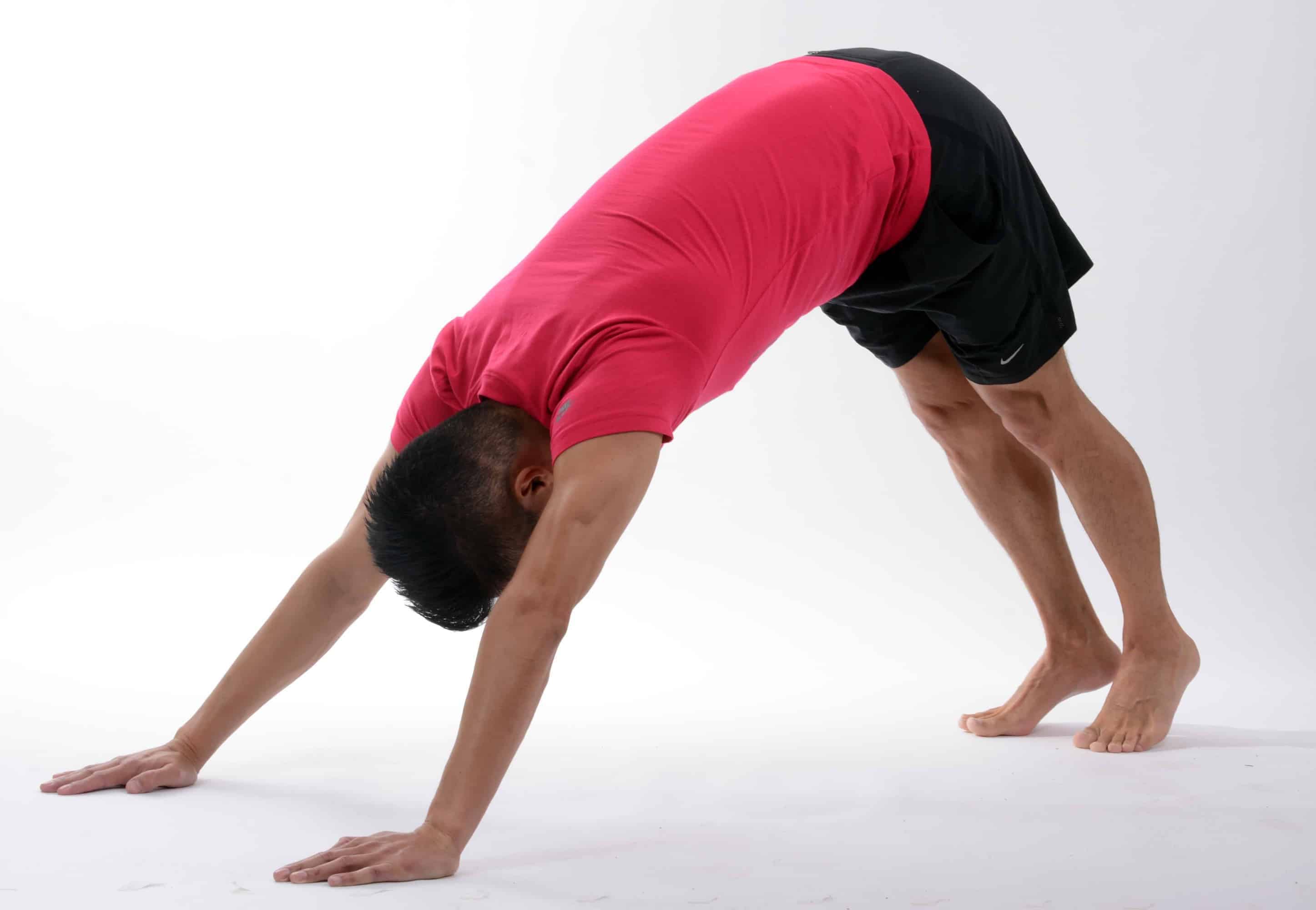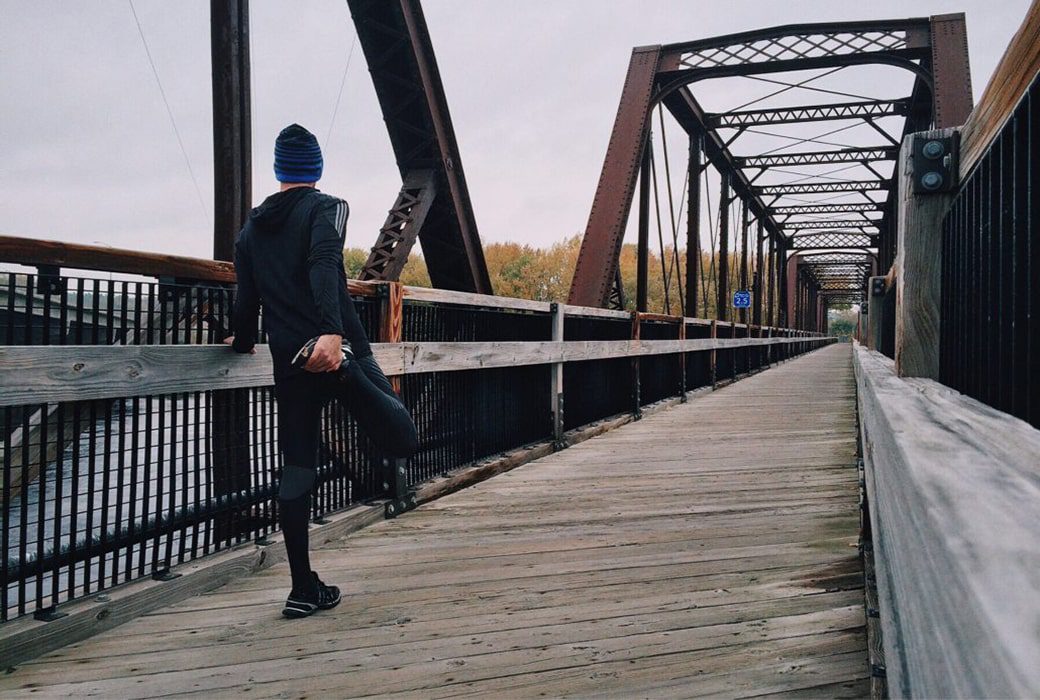Back pain is one of the most prevalent health problems in the world. According to the American Chiropractic Association, 80% of adults will experience a back problem at some point in their lives. An estimated 31 million Americans are suffering from back pain at any given time, and it’s one of the most common reasons for missed work and doctor’s visits. If you suffer from back pain, you’re far from alone.
When back pain acts up, every movement can feel like a struggle. To minimize pain, most people are inclined to stay in bed and move around as little as possible. Although it may seem counter-intuitive, getting your body moving is one of the most effective ways to relieve muscle or joint pain in your back, neck, or shoulders.
Before you resign yourself to another day on the couch because of your back pain, check out these tips and techniques for stretching. Just a few minutes per day completing these simple exercises can get you back on your feet and enjoying the activities you love.

1. Knee-to-chest stretch
For this stretch, start by lying on your back. Bend your knees while keeping your feet flat on the floor. Then, use both hands to grab one knee and pull it toward your chest, keeping the other foot on the floor. As you bring your knee to your chest, press your spine flat against the floor and tighten your abdominal muscles. Hold this pose for 5 to 15 seconds.
Then, release your knee and go back to the starting position, with both feet flat on the floor. Repeat the stretch with the opposite knee, again holding the pose for 5 to 15 seconds. Release your knee and return to the starting position.
Repeat the same motion again, but this time, pull both of your knees to your chest. Hold this pose for 20 to 30 seconds. For best results, go through the entire sequence — first one knee, then the other, then both — two to three times.
This stretch helps to release tension in lower back muscles that may be contracted. Many sufferers find this stretch especially effective when repeated twice daily, once in the morning and once at night.
2. Reclining pigeon pose
To do this stretch, start by lying flat on your back. Lift your left leg and form it into a right angle, with your thigh perpendicular to the floor.
Using both hands, grab your left thigh just under your knee and lock your fingers. Then, lift your right leg and place your left ankle on top of your right knee. If you can, pull your right knee towards you slightly, which will also bring your left leg towards your chest.
Hold this pose for about 10 seconds, or less if this position causes pain. Then return to the starting position and repeat the motion with the opposite leg.
Reclining pigeon pose is a common yoga pose that helps to open up the hips. It’s very effective for stretching the piriformis muscle, a pyramid-shaped muscle in the pelvic region. This exercise can be especially helpful for patients with sciatica, as the piriformis muscle can sometimes become inflamed and press on the sciatic nerve.
3. Shoulder blade squeeze
This is one of the simplest stretches on our list. To do the shoulder blade squeeze, simply stand or sit on the floor, a stool, or an armless chair. Make sure your posture is good, with your back straight and your shoulders squared.
Then draw your shoulders backward, squeezing your shoulder blades together. Hold the pose for a few seconds, then relax into a neutral position.
The shoulder blade squeeze is most effective if repeated between three and five times, several times throughout the day. This exercise is easy to complete while sitting at your desk at work, or any other time that you feel pain in your upper back (also known as interscapular pain).
Note that your posture is a big factor in managing back pain, not just during this stretch but anytime you’re sitting or standing. Performing shoulder blade squeezes throughout the day will make you more aware of your posture. It can even help you strengthen the muscles that allow you to sit or stand up straight.
4. Lower back twist (or lower back rotational stretch)
For the lower back twist, start by lying on your back with your knees bent and both feet flat on the floor. You can either keep your arms comfortably folded with your hands resting on your stomach, or you can extend your arms straight outward in a “T” position.
With your knees touching and your legs still bent, roll both legs to the left side so that your left leg is against the floor and your right leg is stacked on top of the left. Both of your shoulders should remain flat against the floor.
Hold this pose for about 10 to 20 seconds. Then return to the starting position, with your legs still bent and both feet flat on the floor. Roll your legs to the right side, again holding the pose for 10 to 20 seconds (or less if the position causes discomfort). Repeat the entire sequence, rolling the legs first to one side and then to the other, two or three times.
Like reclining pigeon pose, this exercise is most helpful when performed once in the morning and again in the evening before bed. The lower back twist, sometimes called a lower back rotational stretch, can help stretch out contracted muscles in the lower back. It also helps to release tension in the glutes, which can tighten and contract when you experience back pain.
5. Cat and cow stretch

Start on all fours with your weight comfortably distributed on your hands and knees. Then, gradually arch your back upward, towards the ceiling. Round your spine and draw in your abdomen, with your head pointed down and your chin to your chest. This is the cat pose (think of a spooked cat arching its back).
Hold this position for a few seconds, then slowly let your abdomen sink towards the floor. Lift your chest and tailbone so that your spine is rounded the opposite way, with your head lifted up. This is the cow pose. Deepen the stretch only as far as is comfortable for you.
Repeat the movement from cat pose into cow pose slowly but continuously for about 30 seconds. The cat and cow stretch is a very simple exercise that is especially helpful for strengthening the muscles in your back, which relieves pain while reducing the chance of a future injury.
While these are all excellent ways to reduce back pain, there are many other poses and stretches that can also help. Yoga and Pilates instructor Kristin McGee offers helpful descriptions of 10 of the most common yoga poses for beginners. Remember that not all of these exercises will be comfortable for you if you suffer from back pain. But many of these poses — especially child’s pose, seated forward bend, and downward-facing dog — can be helpful in stretching and strengthening back muscles.
Tips for Stretching
The medical benefits of stretching are extensive. Even a few minutes of stretching can immediately loosen up contracted muscles and improve blood flow throughout the body.
Regular stretching has also been shown to improve range of motion. Over time, stretching can increase flexibility and reduce the amount of strain on your body from everyday tasks. Improved flexibility means that you’ll be less likely to injure yourself while playing sports, exercising, or participating in any other physical activity.
Stretching can be helpful for all kinds of pain, particularly in the neck, shoulders, and back. To get the most out of this type of exercise, remember these tips that apply to all types of stretching.
- Stretching should never be painful. It’s normal to feel tension in your muscles as you stretch, particularly when you’re new to a certain pose or during the first few repetitions of a stretch. But stretching should relieve pain, not add to it.
- Avoid bouncing. Many people are inclined to immediately extend as far as they can into a particular pose, and then “bounce” back into a neutral position. Bouncing can worsen muscle pain and even cause new injuries. Move into each pose gradually and comfortably, and hold the stretch for about 10 seconds or so.
- Try to make stretching a habit. Many of the benefits of stretching depend on keeping up with a routine. For example, stretching can improve flexibility and range of motion. But if you don’t stretch for an extended period of time, your flexibility and range of motion will be reduced. Ideally, aim to stretch at least two or three times a week. Stretching daily is even better.
- Symmetry is key. Any time you do a stretch that focuses on one side of your body, be sure to do the same number of repetitions on both sides. This can be difficult if you have an injury that affects only one side of your body. But regularly stretching one side of the body more than the other can cause an imbalance of strength and flexibility, which can heighten your risk of another injury.
- Don’t be afraid to modify stretches. If you’re following along with an exercise video or yoga guide, you may find that you’re not as flexible as the instructor. That’s totally fine, and to be expected — after all, it’s the instructor’s job to comfortably complete these exercises, and they’ve likely been practicing their technique for years. It’s much better to recognize your limitations rather than pushing beyond them and potentially injuring yourself further.
- Stretching doesn’t have to be a major commitment. Particularly when they’ve recently sustained an injury or if they experience chronic pain, many people might feel intimidated about starting and sticking to a new routine. But you don’t need to make a major commitment to enjoy the benefits of stretching exercises. Even ten or fifteen minutes a day can make a huge difference in managing muscle and joint pain.
- Know what stretching can and can’t do. There are plenty of advantages to stretching, but it’s not a cure-all. For example, if you already have an injury, be aware that certain stretches can add strain on the injured muscle and delay healing. Stretching before a sport or physical activity can help prevent pulling or straining a muscle, but it won’t prevent overuse injuries due to improper technique or repetitive motion.
- If you have any doubts, talk to a physician, chiropractor, or other medical professionals. Everyone’s body is different, and everyone has different limitations and goals when it comes to physical fitness. This is especially true in the case of an injury, illness, or chronic condition. If you have questions about how stretching might be helpful or harmful for your unique situation, always reach out to a trained medical professional. Like anything else that involves your health, it’s better to consult an expert than to guess.
Getting relief from back pain doesn’t have to require prescription medication or an invasive medical procedure. For many people, it could be as simple as stretching for a few minutes a day. You don’t need anything other than a clear space on the floor, a yoga mat or exercise mat, and a little knowledge.
If you have any questions about how stretching can help with your back pain, be sure to connect with a skilled chiropractor or physician. At Better Health and Wellness, we can work with you to create a personalized treatment plan that incorporates stretching, chiropractic adjustments, physical therapy, massage therapy, and state-of-the-art medical treatments.
We’ve been helping patients in Alaska with their back pain for almost 20 years, and we can help you too. Contact us to schedule your first appointment.
Schedule an Appointment and Receive
FREE One-Hour Massage Certificate
That’s right! Receive a certificate for a free one-hour massage with our highly-trained and licensed massage therapists for use after your first appointment. Use it yourself, or give it to a friend.
[gravityform id=”8″ title=”false”]









